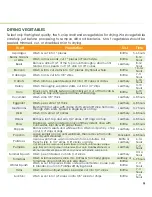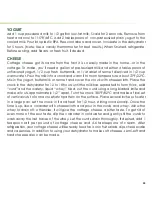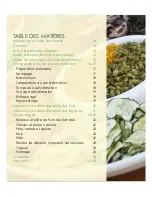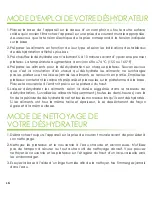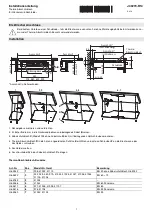
11
yogUrt
Add 1 cup powdered milk to 1/2 gallon low-fat milk. scald for 2 seconds. Remove from
heat and cool to 115ºF/46ºC. Add 2 tablespoons of non-pasteurized plain yogurt to the
cooled milk. Pour into plastic BPA Free containers and cover. Incubate in the dehydrator
for 5 hours. (note: Use a candy thermometer for best results.) When finished, refrigerate.
Before serving, add flavors or fresh fruit, if desired.
Cheese
Cottage cheese got its name from the fact it is so easily made in the home…or in the
cottage. to make, you’ll need a gallon of pasteurized milk and either 4 tablespoons of
unflavored yogurt, 1/2 cup fresh buttermilk, or 1/4 tablet of rennet dissolved in 1/2 cup
warm water. Pour the milk into a crock and warm it to room temperature, about 72ºF/22ºC.
Mix in the yogurt, buttermilk, or rennet and cover the crock with cheesecloth. Place the
crock in the dehydrator for 12 to 18 hours until the milk has separated to form thick, solid
“curd” and the watery, liquid “whey.” next, cut the curd using a long bladed knife and
make all cuts approximately 1/2” apart. turn the crock 180ºF/82ºC and make a final set
of vertical cuts to form a crosshatch pattern on the surface. Place several inches of water
in a large pan, set the crock in it and heat for 1/2 hour, stirring occasionally. once the
time is up, line a colander with cheesecloth and pour in the curds and whey. Allow the
whey to drain off; otherwise, it will give the cottage cheese a bitter taste. to get rid of
even more of the sour taste, dip the colander in cold water and gently stir the curds to
wash away the last traces of the whey. Let the curds drain thoroughly. If desired, add 1
teaspoon salt per pound of cottage cheese and 4-6 tablespoons of cream. After
refrigeration, your cottage cheese will be ready to eat as is or in fruit salads, dips, cheesecake
and casseroles. In addition to using your dehydrator to make soft cheeses, semi-soft and
hard cheeses also can be made.









